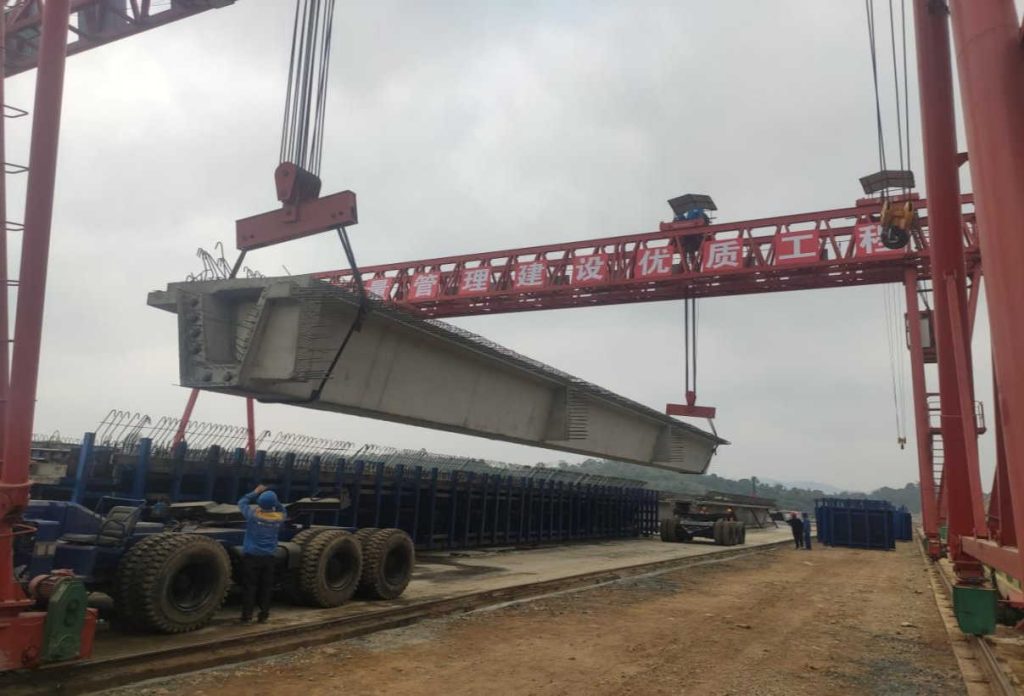American prefabricated beam factory customizes 2 RTG cranes
Dongqi Crane, as a well-known crane manufacturer in the industry, has been committed to providing customers with high-quality, high-performance lifting equipment. The case shared by Dongqi Crane today is two RTG cranes customized by a prestressed concrete bridge manufacturing plant in the United States. Through this transaction and cooperation with the prestressed concrete bridge manufacturer, we not only demonstrate the technical strength and service level of Dongqi Crane, but also further consolidate our position in the crane market. We will continue to adhere to the concept of “customer first, quality first” to provide customers with better products and services.
Through the analysis of this case, we hope that more customers will understand the advantages of customized cranes and understand the crane design process. The better the understanding between supplier and customer when designing a crane for different operating conditions, the more satisfying the final collaboration will be.
Technical details to consider when designing an RTG crane
The two gantry cranes are double beam models with a lifting capacity of 90 tons, and are equipped with customized lifting components to enhance a wider range of products, including meeting the future needs of the transportation industry.
This manufacturing plant supplies products to multiple markets in the United States, mainly focusing on prefabricated and prestressed bridge girders.
“The investment in two gantry cranes has enabled us to enhance a wider range of products and provide us with the versatility needed to improve the efficiency of transfer and loading areas,” said the on-site manager at the Perez factory in California. “The additional capacity, quality, and reliability of RTG cranes are not available in our old non branded gantry.”
Customized cranes through deep communication between customers and suppliers can ensure that the cranes are beneficial for future work and current projects, thereby customizing lifting components to maximize versatility and allowing two cranes to work independently or in series.
The RTG is also equipped with a series of other features, including a cab installed on the lower side beam opposite the engine compartment, and a customized staircase system to make entry and exit as easy as possible. The crane also includes a low position crane, link less steering, and remote diagnostic functions, which help reduce maintenance costs.
The development inspiration for the 90 ton RTG crane comes from the growing demand for gantry cranes with this capability. The Industrial Sales Director stated, “We are not just providing machines with a capacity of 110 tons, but we hope to design RTG cranes to provide our customers with solutions that better match their actual capacity needs.”.

What can we learn from this
Based on the above content, crane suppliers need to pay attention to the following issues when making customized cranes:
- Product diversity and lifting capacity: Suppliers need to fully understand customers’ product types and lifting capacity needs to ensure that the crane can meet the lifting needs of different products. In one case, the crane supplier provided the factory with custom spreader components that enabled its gantry cranes to lift a wider range of products.
- Work efficiency and versatility: Crane design should take into account the efficiency of transfer and loading areas, and have the versatility to meet different operating needs. For example, allowing cranes to work independently or in tandem can provide customers with greater operational flexibility.
- Cooperation and communication: Close cooperation and in-depth communication with customers are the keys to the success of customized cranes. Suppliers need to fully understand their customers’ specific needs, workflows and future plans in order to tailor the most appropriate solution.
- Customized design: According to the specific needs of customers, suppliers need to design customized cranes, including spreader components, cab position, stair system, etc., to ensure operational convenience and comfort.
- Future adaptability: When designing cranes, suppliers should take into account future work needs and development trends to ensure that the crane can not only meet current needs but also cope with possible future challenges and changes.
- Quality and reliability: As heavy equipment, the quality and reliability of cranes are crucial. Suppliers should ensure that cranes are of high quality and have stable performance to reduce breakdowns and downtime and provide customers with reliable services.
- Maintenance and cost-effectiveness: Crane design should take into account ease of maintenance and cost-effectiveness. For example, configuring remote diagnostic functions can reduce maintenance costs and improve maintenance efficiency.
